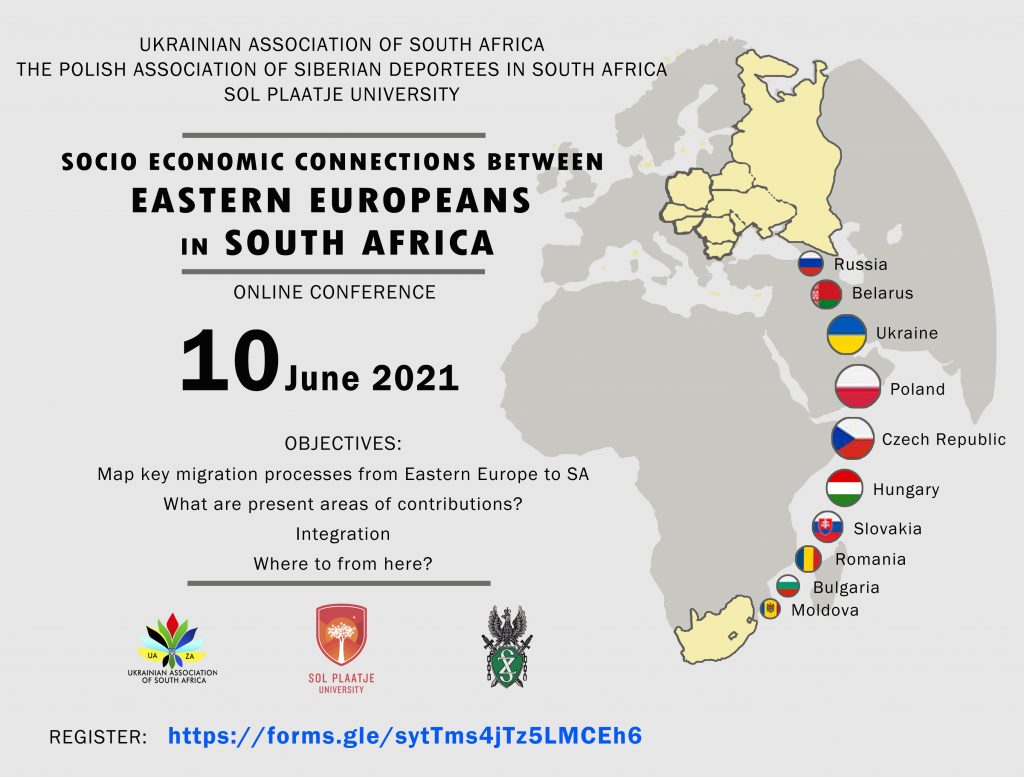The Conference ‘Socio-Economic connections between Eastern Europeans (Ukraine,
Poland and others) in South Africa’ aims to have a closer look at Eastern European
communities in South Africa, their current contribution, integration, institutions and to
start a conversation about the role those communities play in developing cooperation
between South Africa and Eastern Europe.
Objectives:
1. to map key migration processes from Central and Eastern Europe to South Africa
2. to understand the present areas of contributions
3. to discuss the integration
4. Where to from here?
Organisers:
Ukrainian Association of South Africa (NPO), the Polish Association of Siberian Deportees
(NPO) and Sol Plaatje University
Conference background:
South Africa is home to a range of ethnic and religious groups from Central and Eastern
Europe (CEE) who migrated for political and socio-economic reasons.
Multiple historical factors that affected migration:
- shaping of the political map of CEE in the 19 th and 20 th centuries (see the map
below); - events during the Cold War era with Russia dominating the Warsaw Pact countries
e.g. the Hungarian revolution 1956, Prague Spring (Czechoslovakia) 1968, Martial
law in Poland 1981-1983; - new opportunities and the free mobility of human capital and investment in both
directions between South Africa and CEE, as results of the regaining of the
independence by CEE countries after the dissolution of the Soviet Union (1991) and
the abolishment of apartheid.
CEE communities have established organisations to maintain their identities and to
contribute to the socio-economic development of South Africa and relationships between
the two regions.




